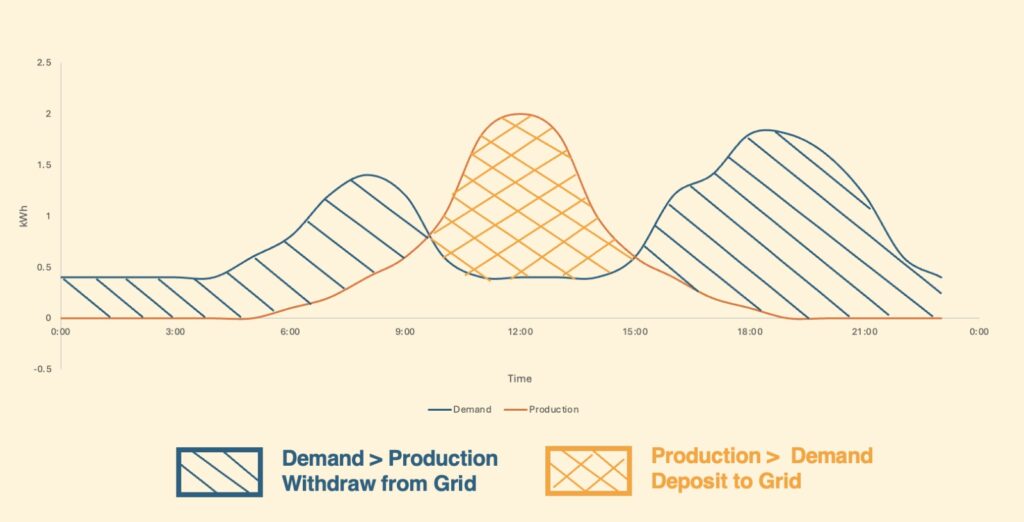
Your Home Solar Panels and Net Metering
Going solar is all about reducing your power bill. But how does that work if my home solar panels produce more power than I need? Or if I’m using power at night when they aren’t producing energy and I don’t have storage batteries?
The answer is called net metering. What is net metering?
Net metering is the net difference between how much power you produce and how much you use over a given time. Think of the power grid as a bank. During peak hours on a sunny day, you produce much power and deposit that into the bank. Net metering tracks this production. Then, when you use energy, you make withdrawals. Net metering tracks this usage, too. In the end, your power bill reflects how much you’ve used against how much you’ve produced, with excess generating credits with your utility company.

Power Usage During The Day
A typical homeowner has a power usage curve resembling a two-humped camel. There is a spike in the morning when you wake up and come home for the evening.

Solar production, on the other hand, is a single curve mirroring the sun’s position in the sky. In the morning and evening, as the sun breaks the horizon, you begin to make power, and at the sun’s peak in the sky, you also peak in power production.
So, when you line these two curves up, it looks like the above diagram. Without batteries to store the power, it almost looks like most of your power is wasted when you cannot use it.
Enter net metering. Net metering takes the sum of the electricity you use (in your house), subtracts the energy you produce (out to the grid), and charges you for the difference.
How does this work over time? Daily, Monthly, and Annually?
Net Metering By Day
Let’s say you used 55kWh of energy on a given day. Your solar system produced 50kWh of energy for that same day. The “net” amount would be 55kWh consumed – 50kWh produced 5kWh net consumed for the day. You would be charged for 5kWh on your bill.
If the opposite were true, and you produced 40 kWh but only used 30kWh, you would have delivered to the grid a “net” amount of 40kWh produced – 30kWh consumed = 10kWh net produced for the day and would get credit for that excess energy.
Net Metering By Month
In practice, your utility company counts power consumption and production on a monthly basis. As you are billed every month, the net amount you produce and use is tallied monthly. Each day’s production vs. usage is accounted for at the end of the month.

Net Metering By Year
As you consume and produce energy, you are billed monthly, just like usual. When you consume more than you produce, your energy bill is extremely low compared to your pre-solar days. But what happens when you produce more than you use? Here is where net metering makes a difference.
This is where thinking of the energy grid as a bank comes into play. Your deposits of excess energy to the power grid generate credits you can use. When you use more than you produce, you can make a withdrawal.
For example, in the hot and sunny months of August and September, you overproduced by 100kWh each month for a total of 200kWh. But October was unusually rainy and cloudy, so you used a net of 300kWh. Your credits from August and September would apply, reducing your bill:
300kWh bill – 200kWh bank = 100kWh charge for the month of October.
One last example – What happens at the end of the year if you have a bank of credits? Do you just keep piling up more and more energy? Unfortunately no. Your net metering agreement will have a “true-up” period, usually at the end of the year, where you will be paid out for your bank of credits at the wholesale electric rate. You start January with a zero balance.
Am I Just Subsidizing My Utility Company with my Home Solar Panels?
One of the critical parts of our home solar needs analysis is to accurately forecast how much energy your home solar panels could generate and how much energy you use. You need a home solar system that produces the right amount of energy for your home. You don’t pay for a system that just subsidizes your utility company after you’ve maxed out your annual power production through net metering.
